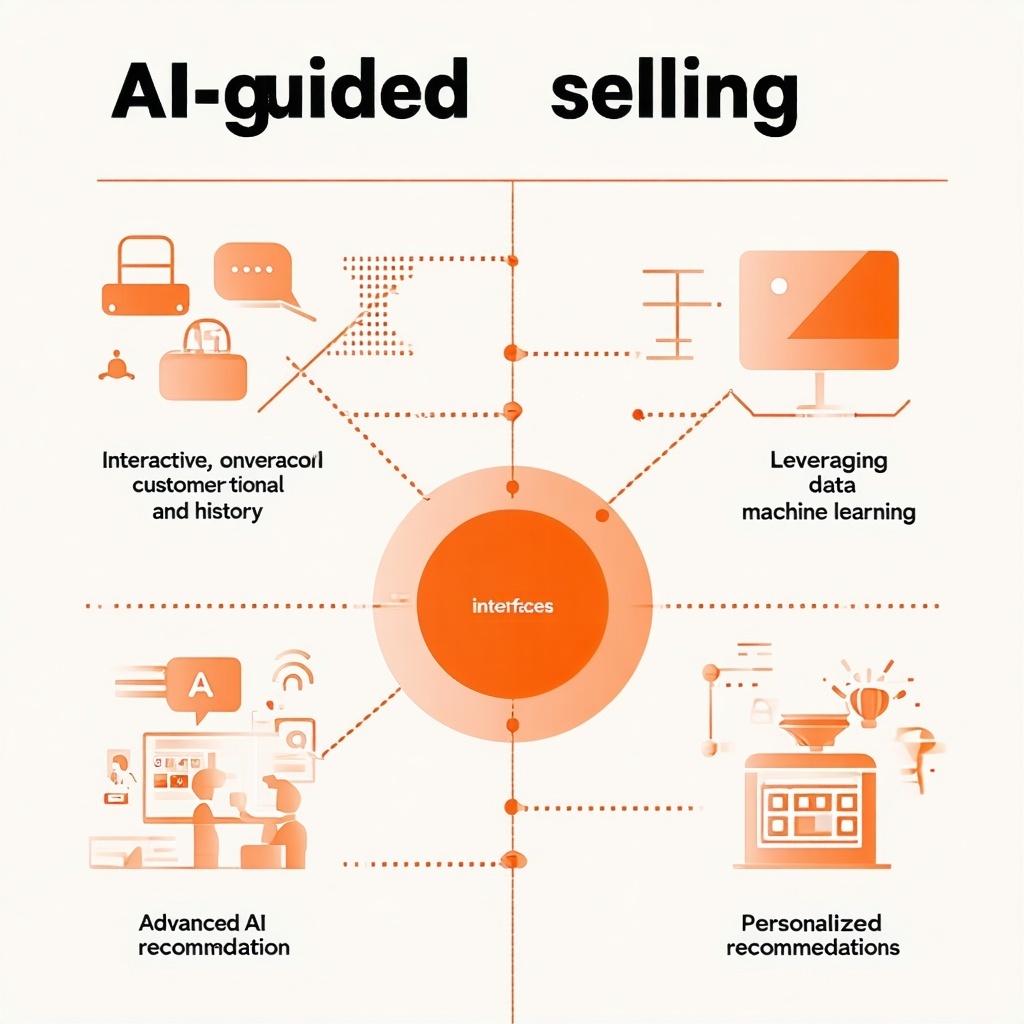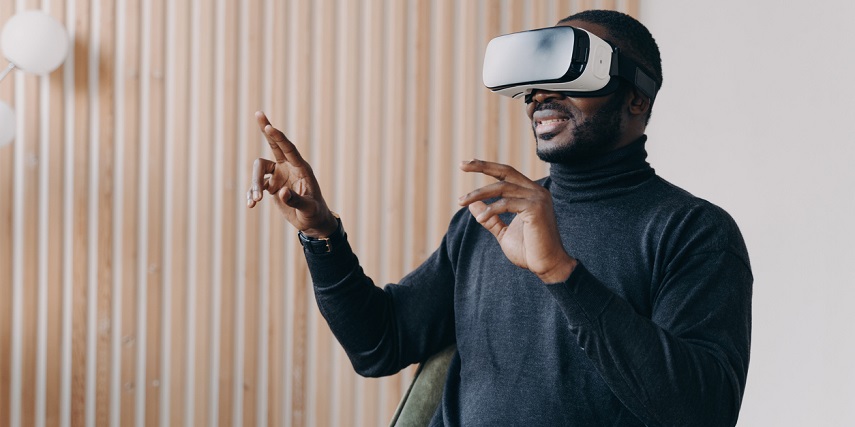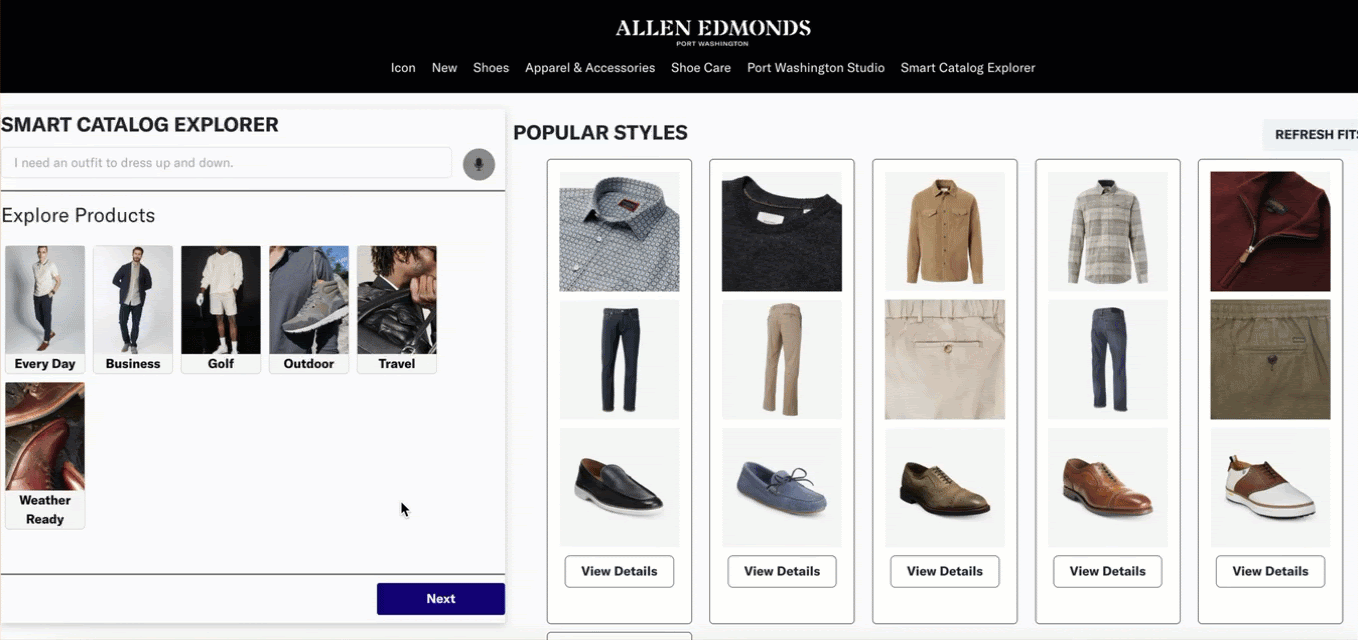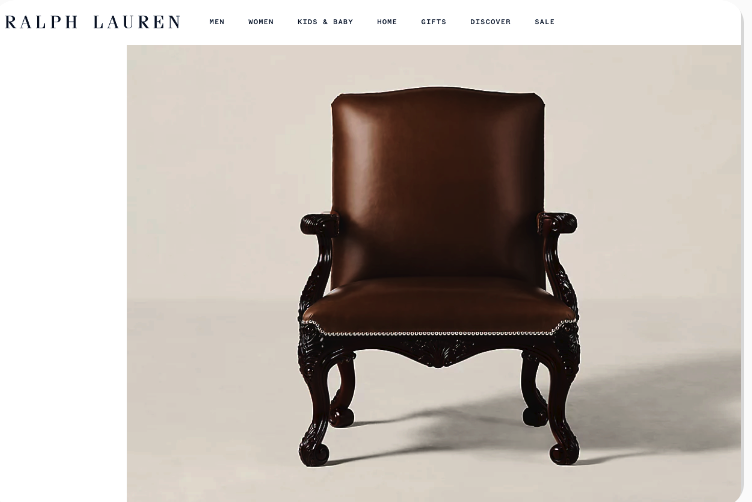5 Ways AI-Guided Selling Increases Average Order Value
AI-guided selling transforms how retailers maximize revenue per transaction through five powerful mechanisms.
- It delivers intelligent upselling by recommending premium options that fit customer needs rather than pushing expensive items randomly.
- It excels at strategic cross-selling by identifying complementary products that enhance the primary purchase.
- It personalizes product bundles based on customer preferences and behaviors.
- It dramatically reduces cart abandonment by building purchase confidence through expert guidance.
- It creates premium buying experiences that justify higher price points and make customers feel valued. Together, these approaches can increase AOV while improving customer satisfaction.
Average order value is the metric that separates thriving retailers from those barely scraping by. You can have massive traffic and decent conversion rates, but if customers are only buying one low-margin item per transaction, you're leaving enormous amounts of money on the table.
The global eCommerce landscape shows AOV increasing to $144.57 as of November 2024, an 8.7% annual increase, but the retailers implementing AI-guided selling are seeing far more dramatic improvements than the market average (Oberlo).
Here's what makes AOV so important: increasing it doesn't require spending more on customer acquisition. You're not buying additional ads or paying for more traffic. You're helping existing customers discover more value in a single transaction. That's why product recommendations can increase revenue by up to 300% while boosting average order value by 50% (SellersCommerce). The customers are already there, already interested, already willing to buy. AI-guided selling just helps them buy more.

At Threekit, we've seen how intelligent guided selling transforms the shopping experience from transactional to relational. When done right, customers don't feel "sold to" in a pushy way; they feel helped. They discover products and options they genuinely want but might not have found on their own. And that feeling translates directly into higher-order values and happier customers who return for future purchases.
Let's break down exactly how AI-guided selling increases AOV through five distinct but complementary approaches.
1. Intelligent Upselling: Premium Options That Actually Make Sense
Traditional upselling often feels pushy and generic. "Would you like to upgrade?" appears without context, and customers roll their eyes and decline. But AI-guided selling approaches upselling by understanding customer needs first and then recommending upgrades that apply to those specific needs.
Think about buying a laptop. A traditional upsell might say, "Upgrade to our premium model for just $300 more!" without explaining what it provides. But AI-guided selling first asks about what you are using the product to do. Are you video editing? Gaming? Just browsing and word processing? Based on your answer, it recommends upgrades that actually matter.
If you're doing video editing, the AI might suggest upgrading the graphics card and RAM, investments that will genuinely improve your experience. If you're just browsing, it won't push unnecessary specs; instead, it might suggest a better display for eye comfort or extended battery life for portability. The recommendations are contextual, relevant, and valuable.
According to McKinsey and Company, 40% of US consumers say a personalized customer experience led them to make a more expensive purchase than originally planned. This isn't manipulation. It's helpful guidance that aligns premium features with actual customer needs. When someone understands why the upgrade matters for their specific situation, they're far more likely to invest in it.
The impact on AOV is substantial. Brands utilizing first-party data in key marketing functions achieved a 2.9-times increase in revenue lift, per Omniaretail. AI-guided selling leverages customer data, behavioral signals, and stated preferences to make upselling recommendations that convert at high rates precisely because they're relevant.
At Threekit, we've developed guided selling tools that present upgrade options naturally within the configuration process. As customers make choices, the AI identifies opportunities where premium materials, enhanced features, or extended capabilities would benefit their specific use case. These recommendations feel like expert advice rather than sales pressure, which is exactly what they should be.
The psychological principle here is simple: people are willing to pay more when they understand the value. AI-guided selling excels at putting that value in personalized ways that generic product descriptions never could. When customers see how a premium option specifically addresses their needs, they lose their price objections.
2. Strategic Cross-Selling: Completing the Solution
While upselling focuses on premium versions of what customers already want, cross-selling identifies complementary products that improve the primary purchase. Done poorly, cross-selling is annoying spam. When done through AI-guided selling, it's a product discovery that increases customer satisfaction while boosting AOV.
The difference between good and bad cross-selling lies in relevance and timing. AI-powered systems analyze product compatibility, purchase patterns, and customer behavior to suggest additions that make sense. Someone buying a camera needs memory cards, a bag, and cleaning supplies. These aren't random suggestions; they're items that any camera owner needs.
Product recommendations constitute 11.5% of revenue through eCommerce sites, according to data based on 1.5 billion online shopping sessions (Marketing Sherpa). That's a good amount of total revenue attributable to timely AI product recommendations.
AI-guided selling knows when to present cross-sell opportunities without overwhelming customers. Early in the browsing process, it might suggest exploring complementary product categories. During configuration, it can highlight accessories that work with specific customization choices. At checkout, it might present last-minute add-ons that customers need but might forget.
For example, a customer configuring a custom sofa might need throw pillows, a matching ottoman, or a protection plan. The AI recognizes which accessories complement their specific fabric choice, color selection, and overall style. Rather than showing every possible accessory, it curates a short list of highly relevant options that improve their purchase.
One effective strategy we've observed is "complete the look" recommendations for fashion and home goods. When someone selects a dining table, the AI suggests chairs, lighting, and décor that coordinate with that specific style. When someone buys an outfit piece, it shows how to complete the ensemble. These suggestions don't feel like upselling. They feel like styling advice from a knowledgeable friend.
The financial impact adds up quickly. Even small cross-sells matter when they happen consistently. If your average order is $100 and you can increase it by $25 through relevant cross-selling on just 40% of orders, that's $10 added to your average order value across all transactions. At scale, that represents substantial revenue growth without additional customer acquisition costs.
Behavioral analysis makes cross-selling even more effective. AI systems track which product combinations customers frequently purchase together and use that intelligence to suggest bundles. If data indicates that 70% of customers who purchase a particular printer also buy a specific ink cartridge within the first month, the system proactively suggests including it in the initial order, typically at a bundled discount that increases perceived value while boosting AOV.
3. Personalized Product Bundles: The Power of Packaged Value
Product bundling is a time-tested strategy for increasing AOV, but AI-guided selling takes it to the next level through dynamic personalization. Instead of offering generic bundles, AI creates personalized package recommendations based on individual customer preferences, browsing behavior, and purchase history.

The beauty of AI-generated bundles is that they balance customer savings with retailer profitability. Customers feel they're getting a deal because the bundled price is lower than buying items separately, while retailers benefit from higher overall transaction values. It's a win-win that only works when the bundle components genuinely complement each other, something AI excels at determining.
Research on bundle effectiveness is clear: they work. When implemented intelligently, bundling strategies can increase AOV because customers perceive higher value in packaged offerings. AI's role is to create bundles that are valuable to each customer rather than one-size-fits-all packages that appeal to a smaller group.
AI-guided selling can create several types of personalized bundles. There are complementary bundles where products work together to solve a complete problem, like a skincare routine with cleanser, toner, and moisturizer. There are tiered bundles offering good-better-best options at different price points, allowing customers to self-select based on budget and need. And there are build-your-own bundles where customers select components with AI guidance to help with selecting the best compatibility and optimal combinations.
The personalization aspect is what makes modern AI bundling so powerful. Traditional bundles were static; the same package was offered to everyone. AI-generated bundles adapt based on what the system knows about each customer. Someone who has previously purchased premium products sees different bundle options than a price-sensitive shopper. Someone browsing for professional use receives different combinations than someone shopping for personal use.
At Threekit, we've implemented bundling features that integrate seamlessly with product configurators. As customers customize items, the AI can suggest complementary products that match their specific configuration choices. When selecting outdoor-grade materials for furniture, someone might see weather-resistant cushions and covers in their bundle recommendations, products that improve their customized purchase.
When customers see a curated package, they don't have to research and select each component individually. The AI has done that cognitive work for them. This reduces decision fatigue while increasing confidence that they're getting everything they need. The bundled price point also creates an anchor that makes the package feel like a smart deal, even if the total is more than what they intended to spend.
One effective approach is progressive bundling during the guided selling conversation. As customers answer questions about their needs, the AI incrementally builds a customized bundle recommendation. By the end of the consultation, customers see a complete solution tailored specifically to their situation, often with a bundle discount that incentivizes purchasing everything together. This transforms shopping from "What should I buy?" to "Should I get this perfect solution that's been curated just for me?"
4. Reducing Cart Abandonment: Preserving High-Value Orders
This one might seem counterintuitive. How does reducing abandonment increase AOV? The connection is direct: higher-value carts are abandoned at higher rates, so preserving those transactions has an impact on average order value.
Think about it logically. A customer who has $500 worth of items in their cart experiences more hesitation than someone with a $50 purchase. The stakes are higher, the commitment is greater, and any uncertainty increases. According to the Baymard Institute, the average cart abandonment rate is 70.22%, but this rate increases for higher-value carts, where customers experience more doubt about their significant investment.
AI-guided selling reduces abandonment specifically for these high-value orders by building confidence throughout the shopping journey. When customers have received expert guidance, configured products to their exact needs, and seen realistic visualizations of what they're buying, they're far less likely to abandon at checkout. The guidance has already addressed their questions and concerns before those doubts can derail the purchase.
The financial impact is substantial. The projected yearly value of abandoned merchandise is around $4 trillion globally (Sellerscommerc), and improving checkout flow and design could recover lost orders worth $260 billion (Baymard Institute). AI-guided selling captures a portion of this recovered revenue, and because it particularly reduces abandonment on higher-value orders, it directly increases AOV.
Consider a furniture purchase scenario. Someone has spent 30 minutes configuring a custom sofa, selecting fabric, color, dimensions, and features, and their cart total is $3,200. That's a significant investment, and doubt creeps in. "Is this really the right fabric?" "Will it fit in my space?" "Should I think about this longer?" Without intervention, there's a high probability they abandon this high-value cart.
However, if AI-guided selling has guided them through the selection process with intelligent questions, validated their choices against their stated needs, and provided realistic 3D visualizations of their configured sofa, as well as virtual placement in their room through AR, their confidence is significantly higher. They've already invested time and mental energy in the process, the AI has reinforced that their choices are smart, and they're far more likely to complete the purchase.
AI-guided selling with integrated visualization capabilities directly addresses uncertainty by showing customers exactly what they're getting. When someone can see their configured product from every angle, place it virtually in their space, and verify it matches their vision, fit uncertainty decreases.
The cart abandonment reduction specifically benefits AOV because of selection bias. Customers who consider high-value products are already inclined toward larger purchases. By preserving these transactions that might otherwise be abandoned, AI-guided selling helps complete higher-value orders. You're not just completing more sales; you're completing more high-value sales.
At Threekit, we've observed that products with advanced visualization and guided selling features see lower abandonment rates than those with standard product pages, particularly for orders above average ticket prices. The guidance and confidence-building that AI provides is especially valuable when customers are making substantial investments, and that's exactly when preserving the transaction matters most for AOV.
5. Creating Premium Experiences That Justify Premium Purchases
AI-guided selling increases AOV by creating an experience that positions purchases as premium and valuable. When customers receive expert guidance, personalized attention, and sophisticated tools to explore products, they perceive higher value in both the shopping experience and the products themselves.
Premium experiences justify premium prices. When someone walks into a luxury store and receives attentive, knowledgeable service, they expect to pay more and they're comfortable doing so. The service itself signals value and quality. AI-guided selling replicates this premium experience at scale online.
Consider how this plays out in practice. A customer exploring products with AI guidance receives personalized recommendations, intelligent questions about their needs, expert advice on options and configurations, and sophisticated visualization tools. This experience feels qualitatively different from generic product browsing on a standard eCommerce site. It feels premium, thoughtful, and valuable.
That perception of premium experience translates directly to purchase behavior. Companies using highly personalized interactions outperform others by 30% in conversion and revenue (IDC). Customers who feel they're receiving VIP treatment are more willing to invest in premium options, add complementary products, and generally spend more per transaction because the elevated experience has primed them to expect and pay for elevated value.
The branding aspect matters here, too. At Threekit, we help retailers create sophisticated product configuration and visualization experiences that position their brands as innovative and customer-focused. When customers engage with cutting-edge AI tools, they associate that technological sophistication with the brand itself, increasing perceived quality and justifying premium positioning.
There's also a reciprocity element at play. When customers feel they've received valuable guidance and attention, even from an AI system, they often reciprocate by making larger purchases. The experience has provided value to them, and they're willing to provide value back to the retailer in the form of a more substantial transaction.
This manifests in subtle ways throughout the shopping journey. Customers who have engaged with AI-guided selling are more likely to select premium materials when configuring products because the experience has positioned those options as worthwhile investments rather than unnecessary upgrades. They're more receptive to suggestions because the system has already demonstrated its value through helpful guidance. And they're more comfortable with higher total order values because the premium experience has established appropriate expectations.
The data supports this connection between experience quality and spending. Personalized on-site product recommendations constitute 11.5% of revenue through eCommerce sites, but that understates the full impact. The personalization creates an environment where customers are generally more engaged, more trusting, and more willing to invest. The direct recommendations matter, but so does the overall experience.
One particularly interesting observation from implementing guided selling at scale: customers who engage with these tools show higher lifetime values, not just higher initial order values. The premium experience creates positive associations that drive repeat purchases. When customers have a sophisticated, helpful shopping experience, they remember it and return. This long-term value multiplies the immediate AOV benefits.
The Compounding Effect: When Everything Works Together
What makes AI-guided selling particularly powerful for AOV is that these five approaches work together rather than independently. Intelligent upselling identifies premium options, which then become part of personalized bundles. Strategic cross-selling adds complementary products to those bundles. The confidence built through guidance reduces abandonment of these higher-value carts. And the overall premium experience makes customers comfortable with the elevated total investment.
This compounding effect means AOV increases exceed what you'd expect from any single technique. A retailer implementing comprehensive AI-guided selling might see the average order value increase by 50% or more, not because any one tactic added 50%, but because multiple approaches, each contributing 10-15%, could compound.
The beautiful thing about AI-guided selling is that these AOV increases come with improved customer satisfaction rather than at its expense. Customers aren't being tricked into spending more; they're discovering more value. They're getting better recommendations, more complete solutions, and more confidence in their purchases. The higher order values reflect customers buying what they actually need and want, guided by intelligent systems that understand their preferences.
At Threekit, we design our guided selling and visualization tools specifically to create these compounding benefits. Configuration interfaces integrate upselling opportunities naturally. Recommendation engines suggest complementary products based on specific customization choices. Visualization builds confidence that reduces abandonment. And the overall experience positions purchases as investments worth making.
Making It Happen: Implementation Considerations
For retailers looking to leverage AI-guided selling to increase AOV, several factors determine success. First, product data quality is essential. The AI needs comprehensive information about product features, compatibility, pricing tiers, and customer use cases to make intelligent recommendations. Investing in clean, detailed product data pays dividends across all five AOV-boosting approaches.
Second, the guidance should feel natural and helpful rather than pushy or scripted. The best AI-guided selling implementations use conversational interfaces that adapt to customer responses. Questions should flow logically, recommendations should feel contextual, and the overall experience should resemble helpful advice from a knowledgeable expert rather than obvious sales tactics.
Third, measurement and optimization are important. Track not just overall AOV but also the specific mechanisms driving increases. Which upsell offers convert best? What cross-sell combinations perform strongest? Which bundle configurations prove most popular? Use this data to continuously refine the AI's recommendations and improve performance over time.
Fourth, integration with visualization tools amplifies the impact. When customers can see their configured products, explore premium options visually, and understand exactly what they're getting, confidence increases and AOV improvements accelerate. At Threekit, we've found that combining guided selling with visualization creates AOV gains.
Finally, focus on customer value, not just transaction value. The most successful implementations help customers discover products and options they're happy they purchased. When customers feel well-served by AI guidance, they return for future purchases, recommend the retailer to others, and become long-term high-value customers. Short-term AOV gains matter, but long-term customer relationships matter more.
The opportunity is substantial and immediate. While the market average shows AOV growing at 8.7% annually, retailers implementing comprehensive AI-guided selling see improvements multiples of that rate, often within weeks. The technology has matured, the implementation pathways are clear, and the results are measurable.
Your customers want to buy more from you. They just need intelligent guidance to discover what more they should buy. AI-guided selling provides that guidance at scale, increasing average order value while creating better shopping experiences. The question isn't whether to implement these capabilities, but how quickly you can deploy them to capture the substantial revenue opportunities they create.
Sources:
- Oberlo - Average Order Value Statistics: https://www.oberlo.com/statistics/average-order-value
- SellersCommerce - AI In ECommerce Statistics: https://www.sellerscommerce.com/blog/ai-in-ecommerce-statistics/
- VWO - Using Personalization to Increase AOV: https://vwo.com/blog/personalization-to-increase-aov-and-conversion-rates/
- Omnia Retail - Boosting E-commerce Revenue: https://www.omniaretail.com/blog/unlocking-higher-profits-from-the-same-number-of-customers
- Bold Metrics - Strategic AI Investments in Retail 2025: https://blog.boldmetrics.com/strategic-ai-investments-in-retail-2025-balancing-innovation-and-roi
- Baymard Institute - Cart Abandonment Rate Statistics: https://baymard.com/lists/cart-abandonment-rate
- Shopify - Average Order Value Guide: https://www.shopify.com/blog/average-order-value
- McKinsey and Company - The value of getting personalization right—or wrong—is multiplying - https://www.mckinsey.com/capabilities/growth-marketing-and-sales/our-insights/the-value-of-getting-personalization-right-or-wrong-is-multiplying
- Marketing Sherpa - Ecommerce chart - https://marketingsherpa.com/article/chart/personalized-product-recommendations
- IDC - https://info.idc.com/rs/081-ATC-910/images/GL-IDC-Infographic-AI-Predictions-2025.pdf


